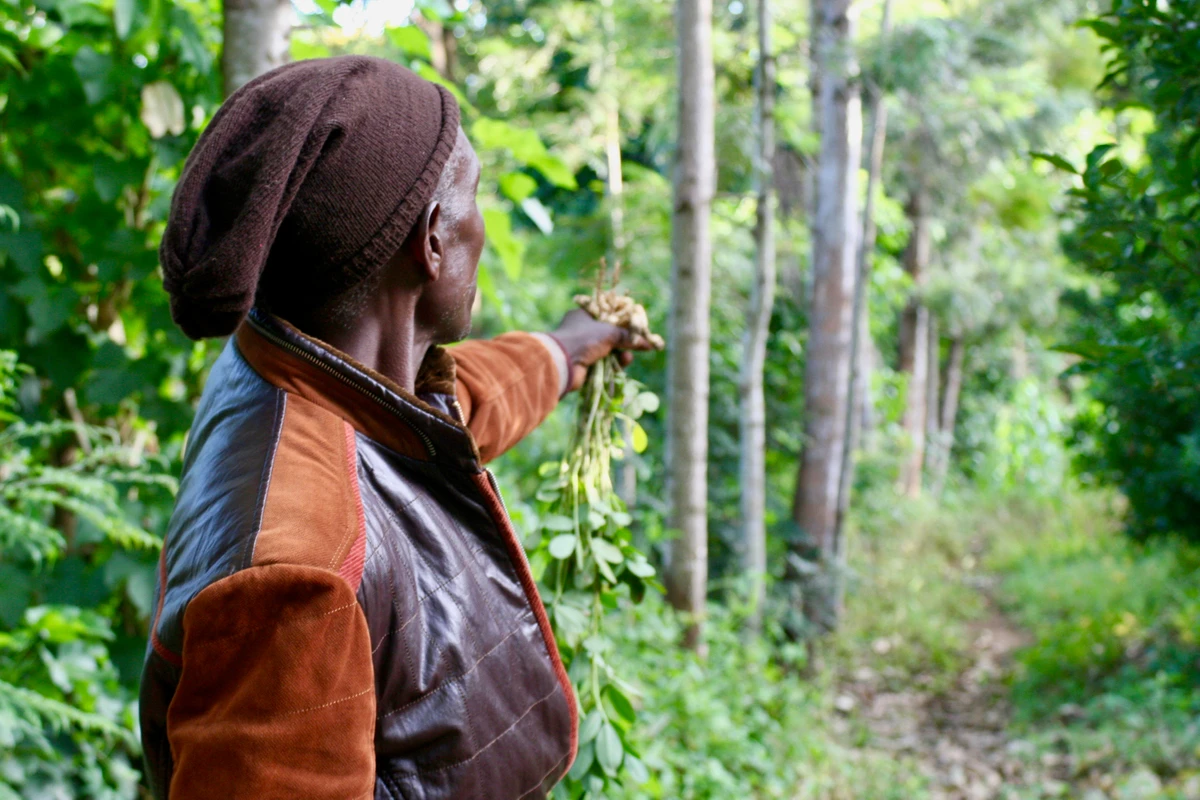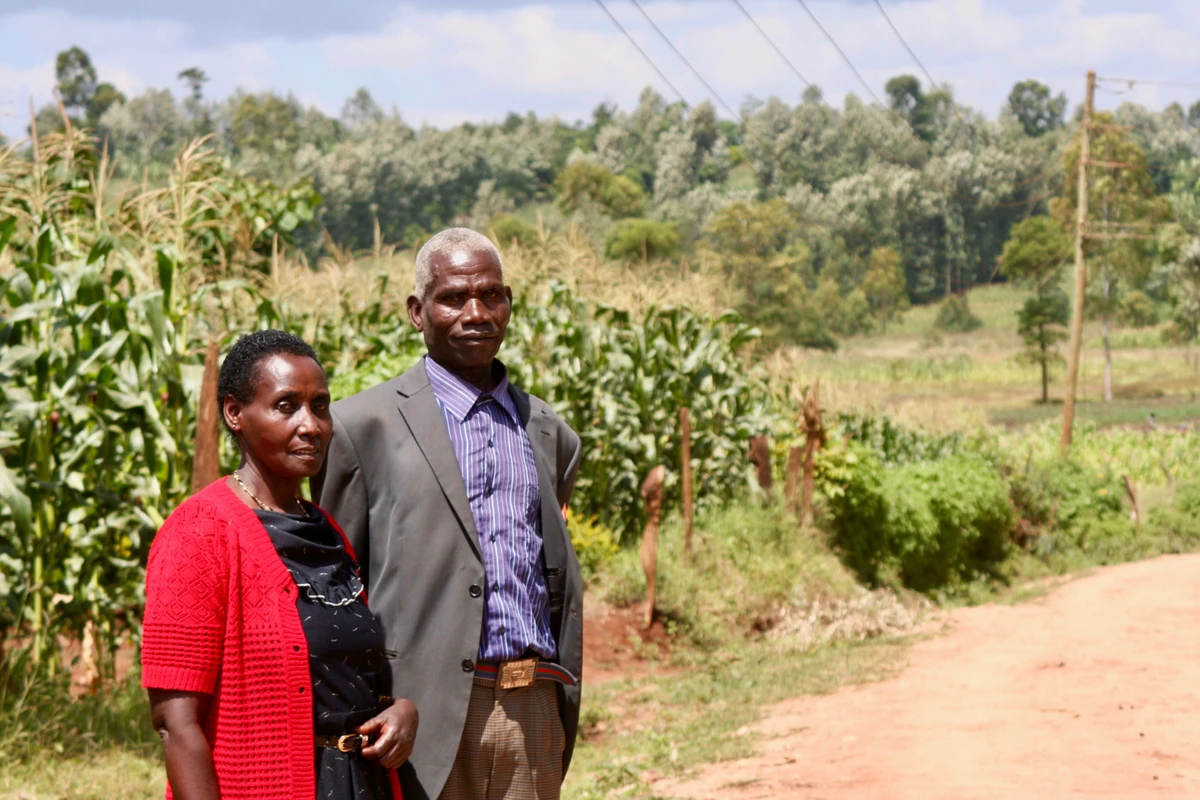TIST History
In the late 1990s, a desire to combine climate change mitigation with improving the lives of the poorest people in the world led to the creation of TIST.

Origins
In 1998, Bishop Simon Chiwanga had a challenge; dealing with tens of thousands of parishioners spread over large distances, he needed a better way to organize his diocese, the Diocese of Mpwapwa, Tanzania. Thinking outside the box, he invited a team of missionaries, led by Ben and Vannesa Henneke of the Truro Anglican Church in Fairfax, Virginia, to lead seminars on the formation and organization of Small Groups. These groups, comprised of 6-12 people, would engage in Bible study, support, and planning. Small Groups discerned and implemented certain Best Practices, such as rotating leadership, Kujengana, collaboration, and servant leadership. Although they didn’t know it at the time, the structure of Small Groups and Best Practices would be shaped by the needs and desires of its members into The International Small Group and Tree Planting Program (TIST).
The following year, a second mission trip continued the facilitation of Small Group seminars. In these seminars, participants were asked to think about the type of world they envisioned for themselves and their children. Tanzania is one of the poorest countries in the world, with a per capita income of $280, and Mpwapwa is one of the country’s poorest regions. Adult life expectancy is 52 years, with approximately one in three young adults testing HIV positive. Literacy rates are approximately 80% for men and 57% for women. Compounding these challenges, “slash and burn” subsistence farming had led to erosion, decreasing crop yields, widespread deforestation, and famine. Participants, who were almost exclusively subsistence farmers, identified specific needs such as reforestation, sustainable agriculture, poverty reduction, and the elimination of famine. They further identified planting trees, HIV/AIDS education, and Conservation Farming, as strategies for addressing these needs.
In December of 1999, 40 participants in the diocese of Mpwapwa and Clean Air Action Corporation (CAAC) built upon several ideas including Small Groups, the sharing of Best Practices, and the need for reforestation, to develop the initial TIST program. Through tree planting, education, and collaboration, Small Groups were able to directly respond to the needs professed by their members. The goals of this program were: conservation agricultural management, food security, basic business management, and the creation of a virtual cash crop through carbon sequestration.
In the coming year, TIST spread to 40 new Small Groups. By training new trainers and relying on word of mouth, TIST was able to begin a sustainable model of viral, organic growth. By the end of 2001, the word had spread with over 600 more Small Groups joining the program. Additional Small Group training in tree planting, nursery care, seedling care, public health, and Conservation Farming further leveraged the passion and work of Small Group members.
Expansion into Kenya, Uganda, and India
In 2001, CAAC staff visited India for an employee’s wedding. Seeing widespread drought and deforestation, they identified an opportunity for TIST to help. They held seminars and found receptive farmers eager to implement the program. As villages began planting trees, India and Tanzania started an information-sharing program to provide insight and encouragement. The success of India’s program demonstrated to CAAC that TIST could work outside of Tanzania.
In July of 2003, CAAC organized a conference in Morogoro, Tanzania, that fundamentally altered the trajectory of TIST’s progress. The seminar drew on the experience of Tanzanian and Indian participants to offer training and knowledge-sharing to Ugandan farmers. Overcoming initial skepticism, the participants took the program back to Uganda and were met with overwhelming enthusiasm. The Morogoro Seminar was one of the first examples of “Come and See”, wherein new participants are invited to come and witness the potential of TIST firsthand. This strategy has been used ever since. Following the Morogoro Seminar, TIST in Uganda began to experience viral growth, as the program spread to new villages and towns.
TIST’s expansion into Kenya was facilitated by a partnership with USAID that provided the resources to implement the current program, as well as the opportunity to significantly expand the social and sustainable development components. CAAC continued the practice of cross-country information sharing by bringing Tanzanian participants into the Mount Kenya region to train and spread the Best Practices, as well as bringing Tanzanians to Kenya for Come and See. In the following year, TIST’s program in Kenya exploded. During this time, several currently integral components of TIST were developed. The TIST Values of honesty, accuracy, transparency, mutual accountability, service to one another, and small budget/big results were formally articulated. These values were vetted by other countries’ participants and came to undergird the entire program.
In order to administer to rapid geographic and participant growth, TIST implemented a new system in Kenya called “Clusters”. Clusters were designed to provide services such as training, administration, payment, and newsletter distribution, to Small Groups living within walking distance of one another. Cluster organization borrowed previous TIST practices, including rotating leadership and the policy of “one man, one woman”. This operational unit has become one of TIST’s defining features and a huge part of the program’s success. By the end of 2006, TIST was operating in four countries, with over 20,000 members in 2,800 Small Groups.
Growth
TIST has celebrated many milestones and organizational successes. In 2011, TIST was the first program in the world to receive dual validation and verification from VCS (Verified Carbon Standard) and CCB (Climate, Community & Biodiversity) for its carbon sequestration work. This unmatched endorsement of TIST’s data management, community benefits, transparency, and efficacy has set the program apart in the realms of carbon offsetting and social development.
While TIST celebrated its “first in the world” status, it also marked the ten-year anniversary of the program expansion in India. Two years later, a large celebration in Uganda marked their decade of growth, with Kenya following in 2015. As the programs evolved, new strategies were developed and implemented to support the work of the TIST farmers. Leadership Councils, comprised of excelling program participants, were formed to provide feedback and take on decision-making responsibilities at the local level. They quickly became a critical place for identifying talent and leadership among program participants. Using such strategies, TIST has created self-sustaining in-country capacity, with leadership and expertise provided by participants themselves.
Always an important part of TIST, information-sharing strategies have worked to allow the program to grow and refine itself organically. The Small Group is the building block of these strategies, wherein individuals share things that worked and did not work, with people in similar situations. Clusters allow for information sharing on a larger level, followed by groups of Clusters, and finally inter-country trips and exchanges of information. These various levels of exchange have facilitated viral growth and constant distillation of effective practices on every level of the organization.
Over the past decade, TIST has experienced massive growth, in terms of participants, Small Groups, Clusters, trees planted, and hectares of reforested land. From 2006-2017, membership approximately quadrupled. Today, there are approximately 19 million live trees planted as the result of over 90,000 TIST participants’ work. The value of this work is comprised not only of the carbon sequestration and corresponding carbon offsetting products, but also in the massive production of ancillary benefits that farmers experience through TIST including: fruit, fodder, fuel, windbreak, leadership development, HIV/AIDS education, general health information, clean stove construction, and social network creation.
TIST in History
This video from 2007 gives further insight into the founding years of the program.

How does TIST work?
TIST Farmers are successfully counteracting the devastating effects of deforestation, erosion, famine, droughts and floods through an innovative solution: planting millions of trees.

TIST Stories
Real life stories from TIST Farmers who are transforming their lives, ensuring better futures for their children and improving local communities by planting trees.
